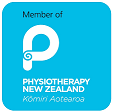
WHAT IS PATELLAR TENDON PAIN?
Do you suffer from sharp pain on, or just below, the knee cap during physical activity, occasionally followed by a dull ache for some time after the activity? Do you feel stiffness in the knee, like a tight band is restricting movement, especially when bending the knee? And you can’t really remember a specific incident that triggered the pain, but instead the pain has been developing slowly over the past few weeks? If so, the chances are you probably have patellar tendon pain, commonly also called patellar tendinopathy, patellar tendonosis or patellar tendonitis. It occurs because your patellar tendon becomes overstressed. This occurs frequently in athletes involved in ‘jumping’ sports (hence why it is often nicknamed Jumper’s Knee).
WHAT CAN BE DONE ABOUT MY KNEE PAIN?
Patellar tendon pain can be very restricting and frustrating as the pain can linger for weeks. It’s possible that you won’t need complete rest and may not have to stop exercise all together. With a little self-discipline and help from one of our physios your patellar tendon pain could be resolved in a matter of weeks. Initial treatments may focus on pain relief. Massage therapy to the tendon and surrounding thigh muscles can promote the repair process and decrease pain.
Manual therapy can be performed to stretch tight muscles surrounding the knee and relieve stiffness in the joint. Taping or strapping can relieve pain in the short term, your therapist can apply this or teach you how to do it. Knee braces can also be helpful in pain relief.Treatments will then focus on rehabilitation.
This is the important part where you can take control of your recovery. The entire lower limb, from your pelvis to your foot needs to work together with the knee to withstand the forces of daily activities and exercise. So, strengthening weak calf, thigh and/or buttock muscles will help reduce the burden on the patellar tendon. Your therapist will give you daily exercises to do that will progress in difficulty as your symptoms improve. Making sure your leg is well aligned will also ensure each muscle and joint is working together harmoniously.
This may require stretching exercises to lengthen tight muscles. Your physical therapist may refer you to a podiatrist for foot orthotics which will give your leg better support and alignment.
Talk to your physiotherapist about training intensity, what surface you are training on and your technique, as these can all contribute to the problem. Sudden increases in training intensity and/or training on hard surfaces increase the impact on the knee and can cause patellar tendon pain. Small changes in your training can help speed up recovery and prevent recurrence of the injury. If you believe your injury is from work or home, ask for advice on how this can be resolved.
Patellar tendon pain is not something you have to live with and accept. With some help and advice, you can be pain-free.











